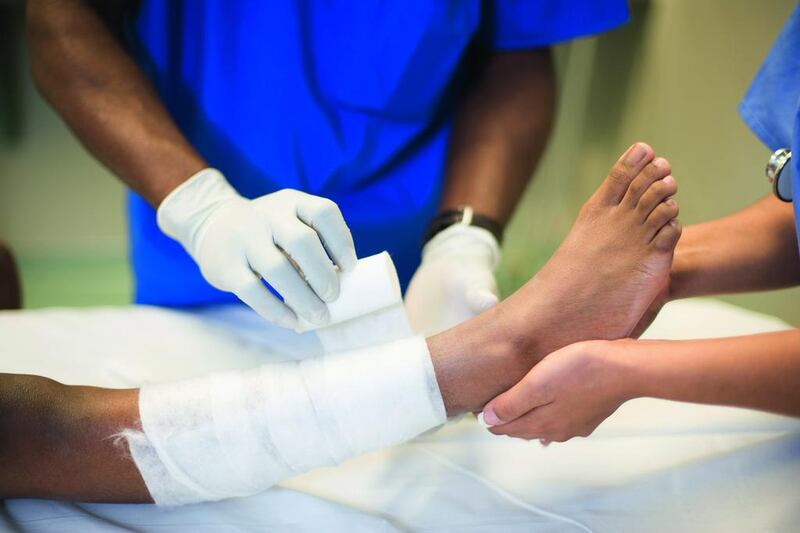The body has a remarkable ability to heal and we usually take this for granted, until something goes wrong.
Poor health and hygiene, disease, infections and allergies can all slow down the healing process. But how do you know whether the healing process has been disrupted and when should you start to worry?
Timm Wolter, head of the department of plastic surgery and dermatology at Healthpoint hospital in Abu Dhabi, says the time it takes a wound to heal depends on the type of wound, how it occurred and where it is on the body. For example, a wound on the foot will take longer to heal than one in an unexposed area.
But there are signs that tell us when something is not right. “Warning signs are reddening, pain and swelling,” says Wolter. “The pain should be getting better, not worse. These are the classic signs of infection.”
Read more: Amanda Tomlinson shares her personal story on recovery after surgery
He says that any wound that takes longer than two weeks to heal should be checked by a physician or healthcare professional.
“If they say it’s slow healing, fine, but then it’s important to support your body. Eat nutritious foods, get enough sleep and eat and drink well.
“There are no specific vitamins for healing, but make sure to get enough fresh fruit and vegetables. Colourful salads are good, and ensure you have meat for protein and milk, too.”
When it comes to protecting the wound, Wolter says, again, it depends on the type of wound and where it is on the body.
“For some wounds, it’s best to have them covered to make sure no dirt can get in there and to prevent infection. Others, such as surgical wounds, are sometimes best left alone.”
He stresses getting advice from your doctor. “The most important thing is to seek advice from a physician in treating the wound. I’m a burn specialist and the worst I’ve seen is a burn, which the patient had covered with toothpaste. Always check with a doctor first to make sure you’re not doing more harm.”
People with diabetes, in particular, may face issues with wounds not healing properly, making them susceptible to infection and gangrene. The reason, according to Dr Saf Naqvi, medical director at Imperial College London Diabetes Centre in Abu Dhabi, is the knock-on effect of high blood sugar levels.
“High levels of blood glucose caused by diabetes can, over time, affect the nerves — this is called neuropathy — and lead to poor blood circulation, making it hard for blood, which is needed for skin repair, to reach areas of the body affected by sores or wounds,” he says.
This can cause the wounds to remain open and unhealed for months, increasing the risk of fungal and bacterial infections and gangrene. Keeping blood glucose levels under control can help reduce the risk of slow-healing wounds.
Naqvi says it’s important that people with diabetes check their feet — which is the body part most at risk — each day and report any signs of damage to their doctor.
atomlinson@thenational.ae






